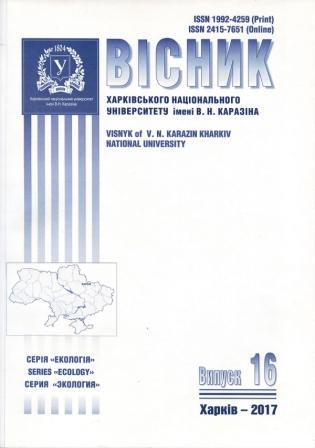Present-day Information on the State of Soil Covering in EU Countries and Ukraine
Abstract
Purpose. Coverage materials initiated by the European and Global Soil Partnership, on the current state of the soil cover, causes quite reasonable concern and requires efforts primarily from European countries, where the use of soil cover is extremely intensive, to correct the situation. Methods. System analysis. Results. On the basis of the various experimental information received last years, - the report of the European soil partnership (2012), fundamental generalization about a condition of soil resources of the world (2015), results of last rounds agrichemical certification of Ukrine,s soil cover (2005-2010) and a database «Soil properties of Ukraine» of NSC «O.N.Sokolovsky Institute of soil science and agrochemistry» draws conclusions on kinds of soil degradation and them distriburion in the countries of the European continent and in Ukraine. In the Europe dominating kinds are sealing (hermetic) of a soil cover, various pollution and water erosion. In Ukraine - dehumification, decrease in the contents of nutrients in soils and various displays of physical degradation. Offers on development in Ukraine of monitoring of a soil cover and reanimation of programs of increase of soil fertility are proved and also about a concrete definition of mutual relations between Ukraine and the European soil partnership. Conclusions. State of soils in Europe and in Ukraine under the influence of unbalanced and overly intensive agricultural technologies shows a clear trend towards deterioration. Needed systematic monitoring of soil fertility improvement program, radical change in the content of agricultural technologies and establish close cooperation with global and European soil partnerships. The plans for the implementation YEHP desirable to consider the specifics of Ukraine and countries of the former Soviet Union.
Downloads
References
Греков В. О., Дацько Л. В., Жилкін В. А., Майстренко М. І., Дацько М. О. і ін. Методичні вказівки з охорони грунтів. Держ. наук.-технол. центр охорони родючості грунтів Мінагрополітики та продовольства. Київ. 2011, 108 с.
Звіт Комісії з реалізації ґрунтової тематичної стратегії і поточної діяльності Європейського грунтового партнерства, 2012, pp. 65.
Лактіонова Т. М., Медведєв В. В., Савченко К. В., Бігун О. М., Шейко С. М., Накісько С. Г. Структура та порядок використання бази даних «Властивості грунтів України». (Інструкція). Харків. «Апостроф». 2010. 96 с.
Пристер Б. С. Проблемы прогнозирования поведения радионуклидов в системе почва-растение // Адаптация агроэкосферы к условиям техногенеза. – АН РТ. Казань, 2010. C. 85 – 127.
Status of the World,s Soil Resources. 2015, ITPS (Intercovernmental), Global Soil Partnership, 608 pp.
Oldeman L. R., Hakkeling R. T. A. , Sombroek W. G. World Map of the Status of the human-Induced Soil Degradation (GLASOD). An Explanatory Note // International Soil Reference and Information Centre. Wageningen. – 1991.
Authors who publish with this journal agree to the following terms:
- Authors retain copyright and grant the journal right of first publication of this work under the terms of a license Creative Commons Attribution License 4.0 International (CC BY 4.0).
- Authors are able to enter into separate, additional contractual arrangements for the non-exclusive distribution of the journal's published version of the work (e.g., post it to an institutional repository or publish it in a book), with an acknowledgement of its initial publication in this journal.
- Authors are permitted and encouraged to post their work online (e.g., in institutional repositories or on their website) prior to and during the submission process, as it can lead to productive exchanges, as well as earlier and greater citation of published work.





